Understanding Cas9 Recombinant Protein: Insights and Uses
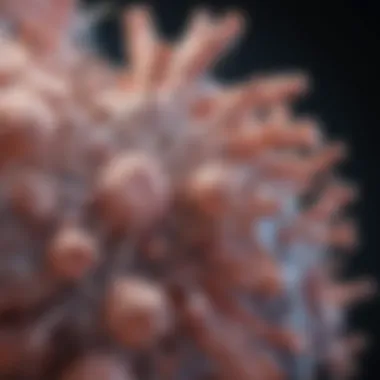
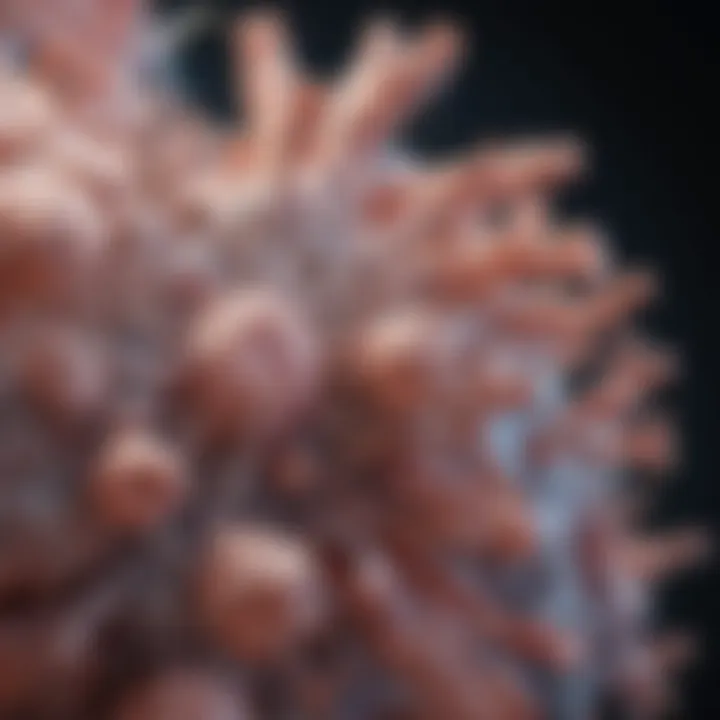
Intro
The emergence of CRISPR-Cas9 technology has revolutionized the landscape of genetic editing. At the forefront of this breakthrough is the Cas9 recombinant protein, a sophisticated tool that facilitates highly targeted modifications to DNA. As we navigate the biological intricacies of Cas9, it becomes evident that understanding its mechanisms and applications is essential for advancing research in genetics and biotechnology.
In this exploration, we will unpack the history and biological context of Cas9, shedding light on its functionality. This isn't just about science; it's about the future of medicine, agriculture, and even ecological restoration. As we peel back each layer, the significance of Cas9 protein becomes strikingly apparent, particularly in a world that is increasingly leaning towards gene editing to solve pressing problems.
The journey begins with a firm grasp of the research landscape surrounding Cas9 protein. Here, we aim to uncover key findings and discuss their implications within the scientific community.
Prelims to Cas9 Protein
In the cutting-edge world of genetic editing, Cas9 proteins stand out as pivotal players in the CRISPR-Cas9 toolkit. Not merely a scientific curiosity, understanding Cas9 is paramount for anyone engaged in molecular biology, genetics, or biotechnology. The significance of this component cannot be overstated as it influences both the accuracy and efficiency of genome editing efforts.
Definition and Role in Genome Editing
Cas9, or CRISPR-associated protein 9, serves as a pair of molecular scissors in the genome editing realm. Its primary function is to locate and cut DNA at specified sights, which, when paired with a designed RNA sequence, allows for precise targeting of genes. This capability facilitates much more than mere alterations; it opens the gateway to a range of possibilities including gene therapy, agricultural enhancement, and the study of gene function.
In essence, Cas9 protein operates within the broader framework of the CRISPR system, utilizing RNA to identify the genetic territory it’s supposed to engage with. This mechanism provides a streamlined process for targeted modification, enabling researchers to repair faulty genes, delete unwanted ones, or even introduce new genetic sequences. The significance here lies in its transformational potential—modifying the genetic landscape of organisms—from bacteria to plants and animals—with unprecedented precision.
"With Cas9, scientists stand at the frontier of genetic engineering—a vast territory that, until recently, seemed a mere dream."
History and Discovery of Cas9
The journey of Cas9 protein began within the humble confines of bacterial defense mechanisms. Discovered in the 2000s, these proteins played a crucial role in how bacteria defend against invading viruses. Researchers found that bacteria use Cas9 as part of their immune system, paired with RNA to identify and neutralize foreign genomic material.
The catalyst for its widespread utility in genome editing emerged from an innovative paper published in 2012, where Jennifer Doudna and Emmanuelle Charpentier articulated the potential to repurpose this natural system for gene editing in other organisms. Their work sparked a revolution in the field, leading to the realization that Cas9 could be harnessed for tailored genomic modifications across various species.
Since then, the landscape of Cas9 research has grown exponentially, spurred by its applications ranging from agriculture to medicine. The history of Cas9 not only showcases a vital scientific breakthrough but reveals an ongoing narrative of discovery and application that continues to unfold today. Understanding this backdrop sets the stage for appreciating the complexity and reach of Cas9 in the modern age of genetic engineering.
Biological Mechanism of Cas9
Understanding the biological mechanism of Cas9 is fundamental as it serves as the backbone of CRISPR technology, providing insights into how this protein can manipulate genetic material effectively. By grasping these mechanisms, researchers can not only enhance gene editing precision but also explore novel applications in various fields like medicine and agriculture.
CRISPR Framework Overview
At the heart of CRISPR technology is the CRISPR framework, which consists of a series of repeated sequences found in the genomes of bacteria. These sequences are interspersed with unique segments known as spacers. Each spacer corresponds to a viral DNA sequence that the bacterium has encountered, thus forming a biological memory. The importance of this adaptive immune system is that it allows bacteria to recognize and respond to threats more efficiently.
- Key Components in CRISPR:
- Guide RNA (gRNA): This component is crucial as it directs Cas9 to the specific location in the DNA where editing is to occur.
- Cas9 Protein: The molecular scissors that actually perform the DNA cleavage, making it a key player in gene editing.
By providing a fast and adaptable means to target specific DNA sequences, the CRISPR framework has revolutionized genetic engineering, allowing for tailored modifications. This flexibility is one of the key benefits, paving the way for groundbreaking research in complex genetic interactions.
Mechanism of Target DNA Recognition
When the Cas9 protein and the guide RNA come together, they form a ribonucleoprotein complex. This complex identifies the target DNA by complementary base pairing between the gRNA and the target sequence. It’s like a lock and key mechanism; the right key (gRNA) pairs with the lock (specific DNA sequence) to ensure precision in targeting.
- Steps in Target Recognition:
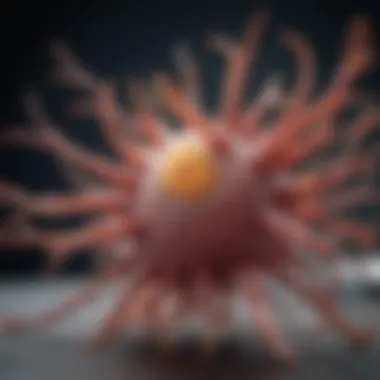
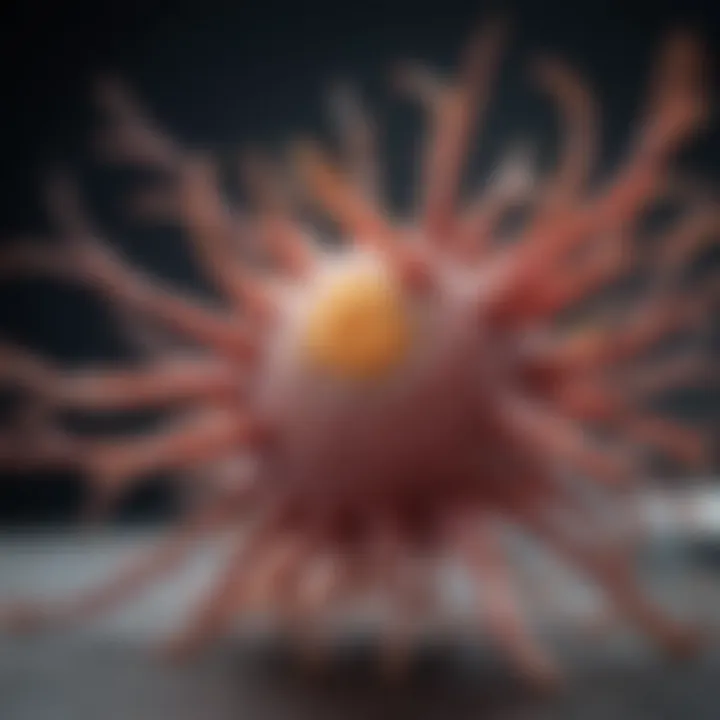
- Binding: Cas9 binds to the guide RNA, forming the ribonucleoprotein complex.
- Scanning: The complex then scans the DNA for a matching sequence.
- PAM Interaction: A short segment known as the Protospacer Adjacent Motif (PAM) must be present next to the target sequence for Cas9 to act. This PAM sequence varies according to the Cas9 variant being used, making it a critical factor in design choices.
This intricate mechanism ensures that Cas9 can efficiently and accurately target the DNA sequence for the intended editing, minimizing off-target effects that could lead to unintended consequences.
DNA Cleavage and Repair Processes
Once the target DNA has been recognized, Cas9 executes its function by introducing a double-strand break in the DNA. This act is pivotal as it initiates the cellular repair processes that can be harnessed for genetic modification. Two primary repair pathways come into play: the Non-Homologous End Joining (NHEJ) and Homology-Directed Repair (HDR).
- NHEJ: A quick but error-prone mechanism; it can lead to insertions or deletions at the break site, resulting in gene knockout or disruption.
- HDR: A more precise method that can be leveraged to correct mutations or insert new sequences when a donor template is provided.
This understanding of Cas9’s cleavage dynamics and the subsequent cellular repair mechanisms is indispensable. By manipulating these pathways, researchers can develop novel strategies for gene therapy, agricultural enhancements, and much more, thus expanding the therapeutic implications of Cas9 technology.
"The beauty of the CRISPR-Cas9 system lies in its simplicity and adaptability, making gene editing approachable yet sophisticated."
In summary, the biological mechanisms underlying Cas9's functionality are complex yet achievable. As research progresses, these insights not only enhance our grasp of genetic engineering but also foster innovations in therapeutic applications and agricultural biotechnology.
Production of Cas9 Recombinant Protein
The production of Cas9 recombinant protein represents a significant milestone in the field of genetic engineering. Understanding how to produce this protein effectively is crucial, as it lays the groundwork for various applications, from advancing scientific research to developing targeted therapies. The intricate process behind the isolation, expression, and quality control of Cas9 protein is not just technical minutiae; it’s about unlocking the potential of CRISPR technology to craft precise genetic modifications.
Through recombinant DNA technology, scientists can harness the Cas9 protein's unique capabilities, enabling them to alter specific DNA sequences with a striking degree of accuracy. The efficiency, yield, and quality of the produced protein influence experimental outcomes significantly, making these production aspects imperative for researchers. Moreover, as the applications of Cas9 expand into clinical settings, the need for standardized and high-quality recombinant protein becomes even more pressing.
Isolation and Purification Techniques
The journey of producing Cas9 recombinant protein begins with isolation and purification techniques that ensure the protein is both potent and devoid of contaminants. Various methods are employed to extract Cas9 from the host organism post-expression.
- Affinity Chromatography: This method is widely adopted owing to its specificity and effectiveness. By tagging the Cas9 protein with a histidine tag, researchers can utilize nickel or cobalt columns to selectively bind the target protein, allowing for a straightforward elution process.
- Ion-Exchange Chromatography: A complementary technique that relies on the ionic charge of proteins. By adjusting the buffer's pH and ionic strength, different proteins can be separated based on their charge, facilitating a deeper level of purification.
- Size-Exclusion Chromatography: This method is useful for further polishing the purified proteins. It separates proteins based on size, allowing smaller molecules to pass through while retaining larger protein complexes.
Efficient isolation and purification not only boost the yield of Cas9 protein but also enhance the downstream applications' reliability and consistency.
Expression Systems Used for Cas9
When it comes to expression systems for Cas9, the choice of host can make or break the success of protein production. Various systems come with their perks and drawbacks:
- E. coli: A popular expression host, known for its rapid growth and well-understood genetics. Yet, the post-translational modifications of proteins expressed in E. coli can be limiting, which might affect their functionality.
- Yeast: Offers a good middle ground with the ability for basic post-translational modifications, along with faster growth rates compared to mammalian systems. However, certain characteristics of the protein may differ slightly from those produced in mammalian cells.
- Mammalian Cells: These systems produce fully functional Cas9 proteins with necessary post-translational modifications. Although they are more expensive and slower, the resulting proteins often have better efficacy in biological systems.
The decision on which system to employ is guided by several factors, including cost-efficiency, desired yield, and intended application.
Quality Control Measures
Finally, quality control measures are indispensable in ensuring that the recombinant Cas9 protein is of high purity and functionality. This aspect is often understated yet extremely critical. Some prevalent practices include:
- SDS-PAGE: This technique allows researchers to assess the purity of the protein by separating it based on molecular weight. A clean band in the right range indicates proper expression and purification.
- Western Blotting: Utilizing antibodies specific to Cas9, this method provides validation of the protein's identity and confirms its presence in the isolated sample.
- Functional assays: Testing the activity of the recombinant protein in targeted DNA cleavage provides practical evidence of its functionality, which is particularly crucial for applications in genome editing.
Quality control not only safeguards the integrity of scientific results but also fosters trust among stakeholders involved in research and development activities involving Cas9 protein.
In summary, the production of Cas9 recombinant protein is a multifaceted process involving intricate strategies for isolation, effective expression systems, and meticulous quality control to ensure high standards. Each step is a building block toward realizing the transformative potential of CRISPR technology in genetic engineering.
Applications of Cas9 Recombinant Protein
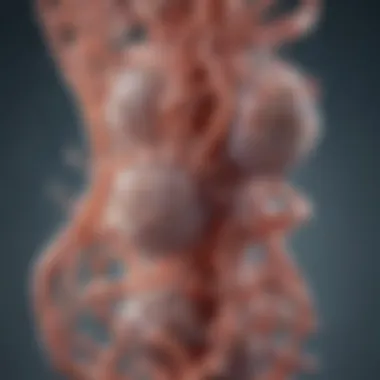

The applications of Cas9 recombinant protein represent a cornerstone in modern genetics, demonstrating not only the versatility of CRISPR technology but also its profound implications across various domains. The ability of Cas9 to precisely alter DNA enables researchers and professionals in biotech to tackle complex challenges. This section lays bare the specific elements and benefits that stem from utilizing Cas9 in diverse fields, underlining how it can shape future innovations in science and medicine.
Cas9 in Research and Development
Cas9 has emerged as a game changer in the realm of research and development, providing a straightforward method for genome editing. In many laboratories, Cas9 is used to create knockout models, helping scientists understand gene function and its role in diseases. Through targeted mutagenesis, researchers can discern the relationship between specific genes and phenotypic outcomes.
For instance, scientists conducting studies on cancer often deploy Cas9 to create models that mimic the genetic make-up of tumors. This approach allows for better drug testing and therapeutic development, increasing the likelihood of successful clinical outcomes. To summarize, Cas9 acts like a scalpel for genetic material, making it indispensable for exploring biological pathways and testing hypotheses in an array of fields.
Therapeutic Implications of Cas9
The therapeutic possibilities arising from Cas9 are vast and multifaceted. As a tool for precise gene editing, it holds the potential to treat genetic disorders by correcting faulty genes at their source. A striking example is the ongoing exploration of Cas9 in treating conditions such as sickle cell anemia and cystic fibrosis, where researchers employ gene therapy to restore normal function.
Moreover, the adaptability of Cas9 for various genetic contexts means it can be tailored for specific patient groups, paving the way for personalized medicine. However, its application brings with it important considerations regarding safety and efficacy. Gene editing carries ethical quandaries, like the unexpected consequences of off-target effects, the possibility of unintended mutations, and the long-term impacts on the human genome. Scrutinizing these factors is crucial as we look toward integrating Cas9 into therapeutic regimens.
Biotechnological Innovations Using Cas9
The innovative capabilities of Cas9 extend beyond simple genome editing, reaching into biotechnological advancements that can reshape agricultural practices. For example, the development of genetically modified crops has leveraged Cas9 to enhance traits such as pest resistance or drought tolerance, allowing for the production of hardier plants.
Additionally, Cas9 is integral to advancements in synthetic biology, where researchers design and construct new biological parts. This new frontier could lead to groundbreaking applications, such as biofuel production, by reprogramming microorganisms to convert biomass into energy more efficiently.
- Key areas where Cas9 is making waves include:
- Agriculture: Improved crops for better yield.
- Environmental Solutions: Engineered organisms for pollution remediation.
- Pharmaceuticals: Cost-effective production of biologics.
Overall, the exploration of Cas9's applications highlights its potential to transform both research practices and everyday life, emphasizing its essential nature in the ongoing evolution of science and technology.
Ethical Considerations Surrounding Cas9
When delving into the realm of Cas9 recombinant protein and its pivotal role in genome editing, one cannot sidestep the murky waters of ethical considerations. Genomic modification holds the key to unprecedented scientific advancements, but it also brings forth a quagmire of ethical dilemmas that society must jointly navigate. Understanding these facets is paramount for researchers, educators, and policymakers alike.
Potential Risks and Safety Concerns
Navigating the landscape of genome editing is not without its perils. The potential risks associated with using Cas9 are manifold and complex. Some critical safety concerns include:
- Off-Target Effects: This phenomenon occurs when the Cas9 protein inadvertently cleaves DNA at unintended sites. Such unintended modifications could result in harmful genetic changes, leading to unpredictable consequences on health or environmental safety.
- Insertional Mutagenesis: Occasionally, the insertion of foreign genetic material can disrupt existing genes, which could lead to diseases or cellular malfunction.
- Immune Reactions: The human body may recognize the Cas9 protein as a foreign entity, risking immune responses that could eliminate the desired therapeutic effects.
It’s crucial, then, to thoroughly assess these potential issues. Addressing them calls for extensive preclinical studies, meticulous design of delivery systems, and continuous monitoring of long-term effects.
"Ethics in science is not merely about following rules; it’s about cultivating responsibility in the face of potential impact on human beings and ecosystems."
Regulatory Framework for Use
The regulatory landscape surrounding Cas9 and CRISPR technology is still evolving. Various countries and institutions are drafting guidelines to ensure safe and ethical experimentation. Some elements that shape the current regulatory framework include:
- Ethical Review Committees: Many research projects involving Cas9 require approval from institutional review boards. These bodies assess the ethical implications before allowing any genome editing experiments to commence.
- Legislation: Different regions have started implementing laws addressing genetic editing, particularly concerning human germline editing. Potential restrictions aim to combat the possibility of designer babies, where genetic traits could be artificially selected.
- International Collaboration: Bodies such as the World Health Organization (WHO) are taking initiative to establish global guidelines for the responsible use of gene-editing technologies. Doing so ensures that ethical standards are harmonized across borders.
Future Directions in Cas9 Research
The field of genome editing is evolving at a pace that often feels like a whirlwind. With Cas9 as a cornerstone of CRISPR technology, understanding the future directions of research in this area is not just interesting; it's essential. As we push the envelope of what is possible with genetic engineering, exploring innovations in editing accuracy and advancements in delivery mechanisms becomes paramount. These two focal points not only enhance the efficacy of Cas9 but also address some pressing challenges that have arisen in the current landscape of genetic modification.
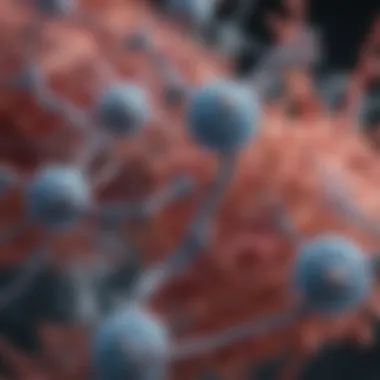
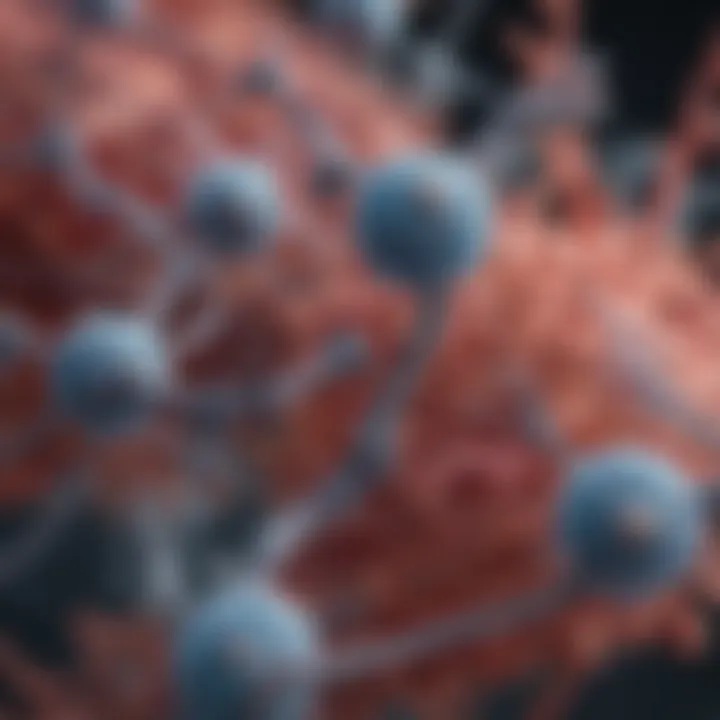
Innovations in Editing Accuracy
As scientists dive deeper into the genetic code, the call for precision in editing becomes louder. Innovations aimed at improving editing accuracy are crucial. The stakes are high; even a single unintended change in the genome can have profound consequences, often leading to off-target effects that can be detrimental.[^1]
Recent approaches to tackle this issue involve several methodologies, such as:
- Enhanced guide RNA design: By refining the guide RNAs used in conjunction with Cas9, researchers are minimizing off-target potential. This can involve optimizing the length and composition of the gRNA, tailoring it to ensure that it binds preferentially to the target sequence.
- High-fidelity Cas9 variants: Various engineered versions of the Cas9 protein have been developed, exhibiting enhanced specificity. For instance, Cas9 nickases, which create single-strand breaks instead of double-strand breaks, reduce the likelihood of unintended modifications.
- Base editing techniques: These cutting-edge techniques allow for the conversion of one DNA base into another with near-perfect precision. This method circumvents the double-strand break entirely, addressing accuracy concerns and the resultant cellular repair response issues.
These innovations not only grant researchers a sharper scalpel in their genetic toolbox but also pave the way for safer applications in therapeutic contexts, bringing forth exciting possibilities for treating genetic disorders.
Advancements in Delivery Mechanisms
Delivery mechanisms in gene editing are akin to the vehicles that carry precious cargo to its destination. Efficient, precise delivery of Cas9 is vital to achieving the desired genetic changes. Several advancements in this area are gaining traction:
- Nanoparticle-based delivery: The use of nanoparticles serves as a promising vehicle for delivering CRISPR components. These nanoparticles can encapsulate Cas9 and gRNA, shielding them from degradation while facilitating cellular uptake.
- Viral vectors: Engineered viral vectors, notably lentiviruses and adeno-associated viruses, are efficient options that help ensure that Cas9 reaches target cells effectively. The flexibility and adaptability of these vectors make them suitable for diverse applications, from basic research to novel therapies.
- Electroporation: This technique, involving electric pulses to create temporary pores in cellular membranes, has been powerful in enhancing the efficiency of Cas9 delivery, particularly in hard-to-transfect cells. It has shown promise in clinical settings, especially with difficult targets like somatic cells.
Enhanced methods of delivery could drastically improve the reach and effectiveness of genetic modifications, expanding the scope of Cas9 application across research and therapeutics, including gene therapy and for combating inherited disorders.
As Cas9 technology forges ahead into uncharted territories, innovations in both editing precision and delivery are shaping a future bursting with potential for transformative change in genetics.
[^1]: For reference to off-target effects, see more on Wikipedia.
Ends
In wrapping up our discussion about Cas9 recombinant protein, it's crucial to appreciate the culmination of insights gathered from various facets of this multifaceted subject. As we’ve explored, Cas9 stands as a formidable player in genetic engineering, principally due to its role in the CRISPR-Cas9 system for editing genomes. The discussions not only illuminates the biological intricacies behind Cas9 but also emphasizes its practical applications and future potential in research.
Importance of Epilogues
The concluding section of an article can’t be merely an afterthought; it serves to synthesize significant findings and underscore the relevance of Cas9 in contemporary science. This isn’t just about highlighting the past achievements in Cas9 research. It is about reflecting on how these developments could shape future endeavors in biotechnology and therapeutics.
"The journey of Cas9 is not just significant in the past; it holds immense promise for the future of genomic research."
By summarizing key concepts, we reinforce the necessity of ongoing research and illuminate gaps where future investigation can be pursued. This also aids in communicating the crucial role academicians and practitioners can play in harnessing Cas9. It’s not just a protein; it’s a gateway to a new realm in genetic possibility.
Summary of Key Insights
- Versatility of Cas9: The protein serves a wide range of applications, from basic research to therapeutic interventions, indicated by its adaptability.
- Technical Advances: Innovations in delivery methods and modifications to improve editing accuracy have the potential to make Cas9 more efficient.
- Ethical and Safety Considerations: Ongoing dialogue around the ethical implications reminds us of the responsibility that comes with such powerful tools.
As the implications of these insights are laid bare, it becomes evident that the dynamic nature of Cas9 technology requires a robust discourse among scientists, ethicists, and policymakers alike.
Implications for Future Research
The path forward for Cas9 research holds vast potential. Understanding the protein’s existing applications offers a roadmap for new projects, but several critical areas need more exploration:
- Improving Precision: Refinements in the accuracy of Cas9 targeting are essential to minimize off-target effects. A focus on optimizing its binding properties would be advantageous.
- Delivery Mechanisms: How Cas9 is delivered into cells is paramount. Developing novel vectors or improving existing ones could enhance its therapeutic usage.
- Regulation of Gene Expression: Beyond merely cutting DNA, exploring how Cas9 can be used for gene regulation could open doors for nuanced therapy designs.
- Cross-Species Studies: Investigating the potential for Cas9 utilization across various organisms can broaden its application range in agriculture, medicine, and beyond.
As we continue to peel back layers of Cas9’s possible applications, it’s prudent to foster interdisciplinary collaboration, ensuring that not only does the technology progress but that it does so ethically and safely. The evolution of Cas9 will undoubtedly shape the landscape of genetic research, making this an exciting time for exploration and innovation.
Citing Relevant Literature
To assist readers in navigating this vast reservoir of knowledge, it is essential to highlight the key literature relevant to Cas9 recombinant protein. Below are some notable publications and resources that provide further depth on this topic:
- Nobel Prize-winning articles that introduce and explore CRISPR technology, showcasing its revolutionary nature.
- Peer-reviewed journals, such as Nature Biotechnology and Genome Research, that provide ongoing research updates and critical evaluations of new techniques.
- Review articles which summarize and analyze trends and methodologies in CRISPR research, allowing scholars to quickly grasp complex information.
- Websites like Encyclopedia Britannica and relevant scientific forums such as Reddit, where ongoing discussions about the implications of Cas9 technology can be found.
"Effective referencing is not just a formality; it's a commitment to the integrity and growth of scientific knowledge."







